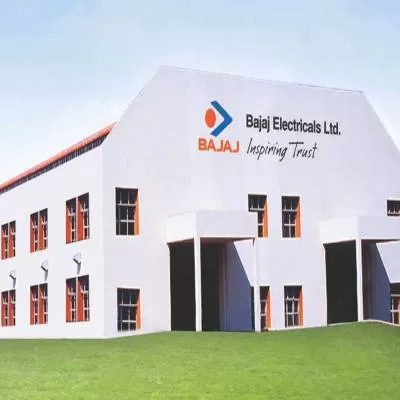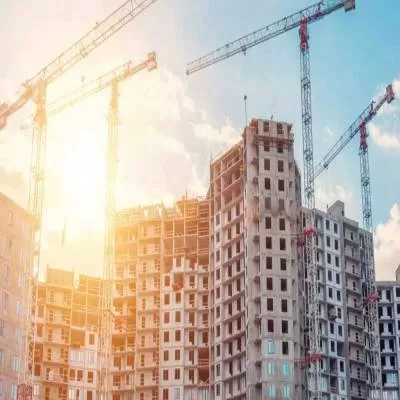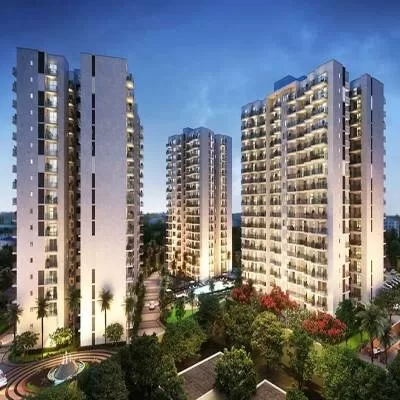- Home
- Real Estate
- Signature Move!
Signature Move!
Read full article
CW Gold Benefits
- Weekly Industry Updates
- Industry Feature Stories
- Premium Newsletter Access
- Building Material Prices (weekly) + trends/analysis
- Best Stories from our sister publications - Indian Cement Review, Equipment India, Infrastructure Today
- Sector focused Research Reports
- Sector Wise Updates (infrastructure, cement, equipment & construction) + trend analysis
- Exclusive text & video interviews
- Digital Delivery
- Financial Data for publically listed companies + Analysis
- Preconceptual Projects in the pipeline PAN India
India’s first asymmetrical cable-stayed bridge, the 575-m-long Signature Bridge worth `8.88 billion will reduce commuting time and serve as a tourist hotspot.India’s most-awaited Signature Bridge, connecting Wazirabad in Delhi across the Yamuna to the inner city, was recently opened to the public. Double the height of Qutub Minar, the 575-m-long bridge, constructed by the Delhi Tourism and Transport Development Corporation (DTTDC), and has reduced commuting time between the northeast areas and the inner city from 45 minutes to just five minutes, combating pollution and saving fuel. India's first asymmetrical cable-stayed bridge, designed with the gesture namaste, this is the first bridge in the country with an elevator moving up in the inclined path, inside the pylon. In fact, two elevators on both the sides moving from the inclined path to the vertical line go 45 m up to the viewers’ gallery, providing a panoramic view of the city. The inception In 1997, 30-40 school students lost their lives in an accident on the old Wazirabad Bridge, which was narrow, prompting the government to build a new bridge. “Instead of making a simple bridge, we thought of making something attractive for the city, where the area can also be developed as a tourist destination,” explains Shishir Bansal, Chief Project Manager, Wazirabad Bridge Project, Delhi Tourism and Transportation Development Corporation (DTTDC). “Hence, we decided to make an iconic cable-stayed bridge.”Initially, a proposal was given to the government for turning the 1.20-km-long Yamuna River into a tourism destination with a bridge in between. Thus, a bridge of larger span was required and with pillars having a gap of about 250 m, so that water sports or navigation could be carried out. To maintain clean water, barrage were to be placed for the 1.2-km stretch. Thus, the idea of a cable-stayed bridge was introduced. Considering the express need, the government decided to divide the project in two phases. It was decided to construct the bridge and its approaches in the first phase, and developing both sides of the river bed for tourism activity would commence on the completion of the bridge, in its second phase.Foundation techniquesDepending on the soil parameters, open as well as well foundation techniques were used in the construction of Signature Bridge. During the soil investigation in the deemed forest, an inclined rock dipping in either directions beneath 40-50 m of ground level was found. For this sloping rock, an integrated well-pile foundation technique was used with piles of 1.20 m diameter and embedded inside the rock for a length of 6 m. “32 such piles were provided,” says Bansal.To counter the uplift from the pylon in back stays foundation P23, the well was filled with 6 m deep heavy weight concrete. After the well cap, which was 2,800 cu m concrete, thermal curing was conducted. Rocker pendulum bearing for each backstay cables in the foundation was provided to take care of the horizontal movement.Boomerang-shaped pylonThe main span of the bridge stands at 251 m and does not have any pillar in between. Major part of the deck is supported by cables, while the composite deck is made of steel and concrete. The boomerang-shaped pylon consists of two inclined columns, which are rigidly connected to the driving lanes and bend midway. The upper portion of the pylon anchors the backstay cables as well as the main span cables, arranged in a harp-like manner. The top of the pylon is created by a 22 m high steel-glass facade structure, which will subsequently be illuminated to create a landmark, visible from a far distance at night.The pylon has three components: The bottom part is the leg, the middle part is the main body with cables, and above the main body is the pylon head, which is made of glass facade. Fifteen pairs of front cables and four pairs of back cables have been provided to support the pylon and deck. The height of the asymmetrical pylon is 154 m, which is the highest in the world. The legs are inclined for a length of 85 m at 63o. During construction, the legs of the pylon were supported with the help of temporary support. “Once the cable was erected, it supported the pylon and the temporary support was removed,” adds Bansal.The pylon legs was launched within 11 segments called L-0 to L-10. The main body segments MB1 to MB5 was launched in five sub-segments at each level, totalling 25. Nearly 48 launchings were done under the supervision of a team of expert engineers from Brazil. Further, a crawler crane of 1,250 tonne capacity was used for the launching of pylons at 154 m height under the supervision of Brazilian engineers.Overcoming challenges with global expertiseAccording to Bansal, erecting the pylon was a major challenge. The erection of pylons was usually carried out around 4 am to avoid temperature variations and effect of wind pressure. “The movement of the wind, when it was more than 10 km per hour, it was difficult to do erection work,” he reveals. “To overcome this hurdle, German consultant Wreckers Engineers conducted the wind tunnel study, while IIT-Roorkee worked on the seismic designs.” In fact, experts from 14-15 countries have contributed immensely to the project. The cable was exported from Tysca in Spain, while its modules were brought from Switzerland. The spherical bearing for main pylon base of 18,000-tonne capacity was manufactured in Germany. Fabrication of all the steel structures (pylon and deck girders) was done by ZTSS in China. Nearly 14,800 MT of structural steel was used in the construction of Signature Bridge that was procured by ZTSS, China, and SAIL and TISCO of India. For reinforcement bars, 6,125 MT of steel was used and procured from the Indian companies SAIL and TISCO. About 24,000 MT cement (OPC and slag) was procured from UltraTech Cement. Korean BUMA boring rigs were used for drilling in inclined rock for driving integrated well-piles in back stay foundations. A Potain tower crane of 160 m height was used for carrying men and materials at different levels during the erection of pylon. About 6,230 litre of paint, procured from AkzoNobel, was used for painting the pylon and deck. Electrical fittings of Bajaj Electricals and Surya Roshni provided lights for the bridge. With re-creational activities such as a viewers’ gallery, water sports and cycle tracks on the anvil, Signature Bridge is surely going to become a tourist hotspot in coming days.Project DetailsLocation: Across River Yamuna at Wazirabad, Delhi.Total length: 675 m (Main bridge 575 m and West extension 100 m); Width - 35.20 m with 4+4 lanes each carriage way; Main span length - 251 m; Side span length - 36 m each.Main bridge contractor: JV of Gammon, India. Tel: 022-2270 5562. Website: www.gammonindia.com; Construtora Cidade, Brazil. Website: www.ccidade.com.br; and Tensacciai, Italy. Cost of main cable stayed bridge: Rs.8.88 billion.Bridge bearings: Maurer Shone, Germany.Expansion joints: Mageba, Switzerland. Website: www.mageba-group.comHSFG bolts: TVS Fasteners. Mobile: (0) 94902 63190. Website: www.tvsfasteners.comPMC and services consultant: DTTDC. Tel: 011-23819595, 9696. Website: www.delhitourism.gov.inStructural consultants: JV of Schlaich Bergermann Und Partner, Germany. Website: www.sbp.de; and Construma Consultancy, India. Third-party QA Consultants: Lloyds Register Asia. Website: www.lr.orgArchitects: Rattan J Batliboi. Tel: 022-4064 0000. Website: www.rjbx.inErection analysis and design of temporary structures: DMA-Studio De Miranda, Italy. Website: www.demiranda.it.Electrical consultant: Rattan Batliboi as part of Schlaich Bergermann Und Partner.Lifts inside pylon: Maspero India-Maspero Italy JV. Website: www.maspero.comPylon access system: Oriental Engineering Works. Tel: 022-2414 7381. Website: www.oewin.comHydraulic model studies: Central Water Power Research Station. Tel: 020-2410 3200. Website: www.cwprs.gov.in






















